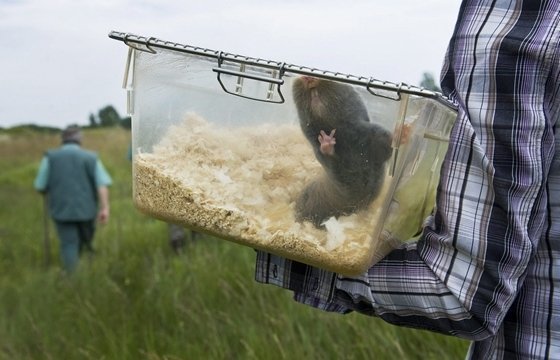According to hvg.hu, the border designed at the Serbian-Hungarian border would hinder the free movement of wildlife and it would cut asunder protected habitats. It would also mean the end of the Serbian-Hungarian cooperation of decades – environmental protection experts said. Referring to that, the European Union can intervene, which has licensing and inspection jurisdiction over the Natura 2000 areas, because those areas are parts of that area.
The experts say the construction of the fence would seriously harm the natural habitat of wild animals and plants, especially in the area administrated by the Kiskunsag National Park.
The 5-km-long border is protected by Natura 2000 next to Asotthalom and Kelebia, where currently the most migrants – 100-200 people a day – are trying to get through the border. According to an expert familiar with the area, the migrants’ impact on the environment was negligible so far, but the government would bisect small-number and protected populations with the fence, and the movement of the big animals would also be impossible, hvg.hu said.
On behalf of the involved national parks, the Csongrad County Government Office press service answered hvg.hu. They said there haven’t been discussions so far, but the preparation of the construction has started. In their view, big animals are not common in the area, and the fence wouldn’t cause problems for the smaller ones. According to them, there is no marking animal in the area, whose activities would be significantly affected by the fence, so they don’t have to turn to the EU, and all legal possibilities are given to the construction.
However, Ferenc Bojtos, associate of Csemete Association said that one of the most endangered mammals of Europe lives in the area. It is the Delvidek mole rat (Nannospalax montanosyrmiensis), whose rescue a program launched in 2012, because they are fewer than the giant pandas. The concreted foundation of the fence would hinder the mole rat’s underground movement. A colleague of a national park said the flightless animals would certainly become isolated from their conspecifics, and even butterflies couldn’t get through the fence under 4 m height.
It was a condition of Hungary’s EU accession that the country should join two nature conservation conventions. 15% of the territory of Hungary falls under some protection classification and the Natura 2000 covers almost all of these areas, and it covers the 21% of the country’s territory. These areas were designated by Hungary.
The control is exercised by the the European Commission, besides Hungary. In any case, an impact study is mandatory if someone wants to construct a building and the EC can examine it. If they meet a plan which can put at risk the natural values, they can refuse to grant the permit, hvg.hu said.
The source from the National Park said he knew an example when the EU condemned the decision, but there were no meaningful consequences. The government hasn’t visited the experts of the parks. Although recent years’ experiences showed even if there was consultation, the government hardly adopted the suggestions.
By the building of the fence, the government wouldn’t honor its own laws. According to the Law on Protection of the environment, the fence would be forbidden in the protected area.
However, President Janos Ader can prevent the construction, because he’s acting like a Green president. He appeared at the Water Conference organized by Budapest, the South Korean World Water Forum and he also joined the initiative of Al Gore related to the Parise Climate Summit.
based on the article of hvg.hu
translated by BA
Photo: MTI
Source: http://hvg.hu
please make a donation here
Hot news
Minister Szijjártó: Hungary ‘number one’ destination for Chinese investment in Europe
New exhibition showcases the legacy of Hungary’s iconic painter Munkácsy – photos
Budapest’s Pullman Hotel just hosted the most immersive event ever!
Billions lost in EU funding to cause economic fallout for Hungary
Nostalgic Advent bus services in Budapest
Hungarian MPs decide on important tax laws





